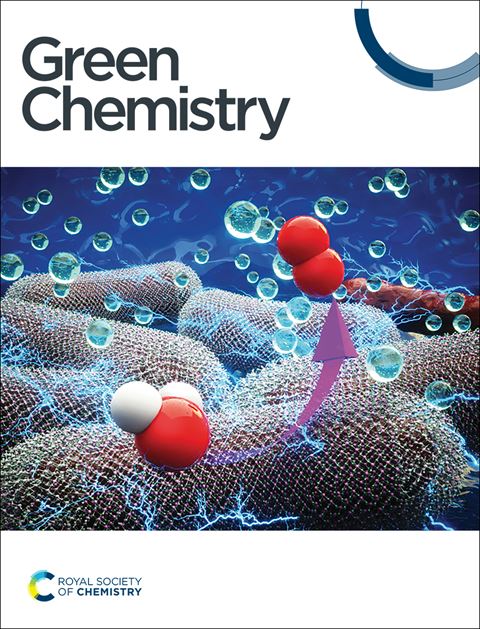Recent advances in bifunctional carbon-based single-atom electrocatalysts for rechargeable zinc–air batteries
IF 9.2
1区 化学
Q1 CHEMISTRY, MULTIDISCIPLINARY
引用次数: 0
Abstract
Rechargeable zinc–air batteries (R-ZABs) have substantial potential for future large-scale applications owing to their sustainability, intrinsic safety, and high energy density. However, R-ZABs still lag behind the remarkable success of lithium-ion batteries (LIBs) to date. A crucial factor in advancing sustainable R-ZABs is the development of efficient bifunctional oxygen electrocatalysts, since they are currently constrained by the slow kinetics of the oxygen reduction reaction (ORR) and the oxygen evolution reaction (OER) at the air electrodes. Recently, carbon-based single-atom catalysts (C-SACs) have emerged as leading candidates among available oxygen electrocatalysts due to their high atom efficiency, adaptable structures, and outstanding catalytic activity. The growing interest in bifunctional C-SACs necessitates a thorough exploration of their reaction mechanisms and strategies for design and modification toward effective enhancement of ORR and OER performance. In this review, we begin by outlining the fundamental composition and reaction mechanisms of R-ZABs. We then delve into six atomic-scale modulation strategies of C-SACs in detail, emphasizing the relationship between structure and performance to aid in the development of highly efficient bifunctional electrocatalysts. The fundamental insights into the dynamic structural changes and the mechanisms of ORR/OER for C-SACs are presented by integrating in situ and/or operando characterizations with theoretical calculations. We also provide an overview of the latest advancements in C-SACs for sustainable R-ZABs, focusing on different types of carbon precursor and the impact of carbon nanostructures on electrocatalytic performance. Finally, we discuss future perspectives and challenges associated with C-SACs in R-ZABs. This review aims to offer practical and inspiring guidance for the exploration of optimal C-SACs and further enhancement of sustainable R-ZAB performance.

可充电锌空气电池用双功能碳基单原子电催化剂的研究进展
可充电锌空气电池(R-ZABs)由于其可持续性、内在安全性和高能量密度,在未来的大规模应用中具有巨大的潜力。然而,R-ZABs仍然落后于迄今为止取得显著成功的锂离子电池(lib)。推进R-ZABs可持续发展的一个关键因素是开发高效的双功能氧电催化剂,因为它们目前受到空气电极上氧还原反应(ORR)和析氧反应(OER)缓慢动力学的限制。近年来,碳基单原子催化剂(C-SACs)因其高原子效率、适应性强的结构和优异的催化活性而成为现有氧电催化剂的主要候选者。随着人们对双功能C-SACs的兴趣日益浓厚,有必要对其反应机制和策略进行深入的探索,以有效地提高ORR和OER性能。本文首先介绍了R-ZABs的基本组成和反应机理。然后,我们详细研究了C-SACs的六种原子尺度调制策略,强调结构与性能之间的关系,以帮助开发高效的双功能电催化剂。通过将原位和/或operando表征与理论计算相结合,提出了对C-SACs的动态结构变化和ORR/OER机制的基本见解。我们还概述了可持续R-ZABs的C-SACs的最新进展,重点介绍了不同类型的碳前驱体以及碳纳米结构对电催化性能的影响。最后,我们讨论了与R-ZABs中C-SACs相关的未来前景和挑战。本综述旨在为探索最佳C-SACs和进一步提高R-ZAB的可持续性能提供实用和启发性的指导。
本文章由计算机程序翻译,如有差异,请以英文原文为准。
求助全文
约1分钟内获得全文
求助全文
来源期刊

Green Chemistry
化学-化学综合
CiteScore
16.10
自引率
7.10%
发文量
677
审稿时长
1.4 months
期刊介绍:
Green Chemistry is a journal that provides a unique forum for the publication of innovative research on the development of alternative green and sustainable technologies. The scope of Green Chemistry is based on the definition proposed by Anastas and Warner (Green Chemistry: Theory and Practice, P T Anastas and J C Warner, Oxford University Press, Oxford, 1998), which defines green chemistry as the utilisation of a set of principles that reduces or eliminates the use or generation of hazardous substances in the design, manufacture and application of chemical products. Green Chemistry aims to reduce the environmental impact of the chemical enterprise by developing a technology base that is inherently non-toxic to living things and the environment. The journal welcomes submissions on all aspects of research relating to this endeavor and publishes original and significant cutting-edge research that is likely to be of wide general appeal. For a work to be published, it must present a significant advance in green chemistry, including a comparison with existing methods and a demonstration of advantages over those methods.
 求助内容:
求助内容: 应助结果提醒方式:
应助结果提醒方式:


